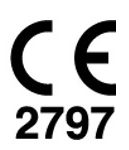Beneath the surface: subcutaneous injection for dehydration
Risk of dehydration higher during the summer
As temperatures rise during the summer months, the risk of dehydration increases.
This is especially true for certain patient populations.
Older adults are at a high risk of becoming dehydrated.1
Dehydration is one of the 10 most frequent reasons for geriatric patients to be hospitalised.2
It has a higher mortality rate at 60 days than hip fracture.2
The forgetfulness associated with dementia can result in dehydration because patients with this condition may not remember the last time they took a drink.1
Paediatric patients are also at risk.3
Dehydration may impede these patients’ ability to recover from certain medical conditions, including: acute gastroenteritis; respiratory, genitourinary and febrile illnesses.3
Subcutaneous injection: When rehydration isn’t possible orally or intravenously
Subcutaneous injection, also known as hypodermoclysis, is a way to infuse fluids into the subcutaneous tissue.4
This route of administration allows you to rehydrate patients who have difficulties receiving fluids orally or intravenously.3
Oral hydration may not be possible because of cognitive impairment, vomiting, nausea, infection, cancer-related abdominal obstruction or stroke, especially in elderly patients.4
Hypodermoclysis may also be used to administer medication5. Following injection, the medication reaches the bloodstream via capillaries or lymphatic vessels.5
The subcutaneous route is frequently used in geriatric care, paediatric care and post-operative pain management.3,4,6
How could your patients benefit from subcutaneous injection?
When compared with intravenous (IV) therapy, subcutaneous infusion may offer the following four benefits:
1. Ease of use for catheter insertion and maintenance3-5
2. Improved patient comfort3-5
3. Lower risk of complications3-5
4. Increased cost-effectiveness for medication delivery*7,8
However, there are some contraindications to subcutaneous injection. When fluids must be administered rapidly and in large volume, they shouldn’t be given via this route.4
Other contraindications include patients at a high risk of pulmonary congestion or oedema, and those with clotting disorders.4
Subcutaneous infusion may be a safe and effective alternative to IV therapy.5
The BD Saf-T-Intima™ Safety System is designed for subcutaneous infusion therapy.
Find out more about this catheter by downloading the brochure below.
*With trastuzumab and rituximab
References
1. Hooper L. Why, Oh Why, Are So Many Older Adults Not Drinking Enough Fluid? J Acad Nutr Diet. 2016;116(5):774-778. doi:10.1016/j.jand.2016.01.006
2. Remington R, Hultman T. Hypodermoclysis to treat dehydration: a review of the evidence. J Am Geriatr Soc. 2007;55(12):2051-2055. doi:10.1111/j.1532-5415.2007.01437.x
3. Kuensting LL. Comparing subcutaneous fluid infusion with intravenous fluid infusion in children. J Emerg Nurs. 2013;39(1):86-91. doi:10.1016/j.jen.2012.04.017
4. Sasson M, Shvartzman P. Hypodermoclysis: an alternative infusion technique. Am Fam Physician. 2001;64(9):1575-1578.
5. Dychter SS, Gold DA, Haller MF. Subcutaneous drug delivery: a route to increased safety, patient satisfaction, and reduced costs. J Infus Nurs. 2012;35(3):154-160. doi:10.1097/NAN.0b013e31824d2271
6. Kawamata T, Sato Y, Niiyama Y, Omote K, Namiki A. Pain management after lumbar spinal fusion surgery using continuous subcutaneous infusion of buprenorphine. J Anesth. 2005;19(3):199-203. doi:10.1007/s00540-005-0309-1
7. Delgado Sánchez O, Gutiérrez A, do Pazo F, et al. Comparative Cost Analysis Of Intravenous And Subcutaneous Administration Of Rituximab In Lymphoma Patients. Clinicoecon Outcomes Res. 2019;11:695-701. doi:10.2147/CEOR.S212257
8. Rojas L, Muñiz S, Medina L, et al. Cost-minimization analysis of subcutaneous versus intravenous trastuzumab administration in Chilean patients with HER2-positive early breast cancer. PLoS One. 2020;15(2):e0227961. doi:10.1371/journal.pone.0227961

This list of references to third-party peer-reviewed material and the sites they are hosted on are provided for your reference and convenience only, and do not imply any review or endorsement of the material or any association with their operators. The Third-Party References (and the Web sites to which they link) may contain information that is inaccurate, incomplete, or outdated. Your access and use of the Third Party Sites (and any Web sites to which they link) is solely at your own risk.
BD-91922




